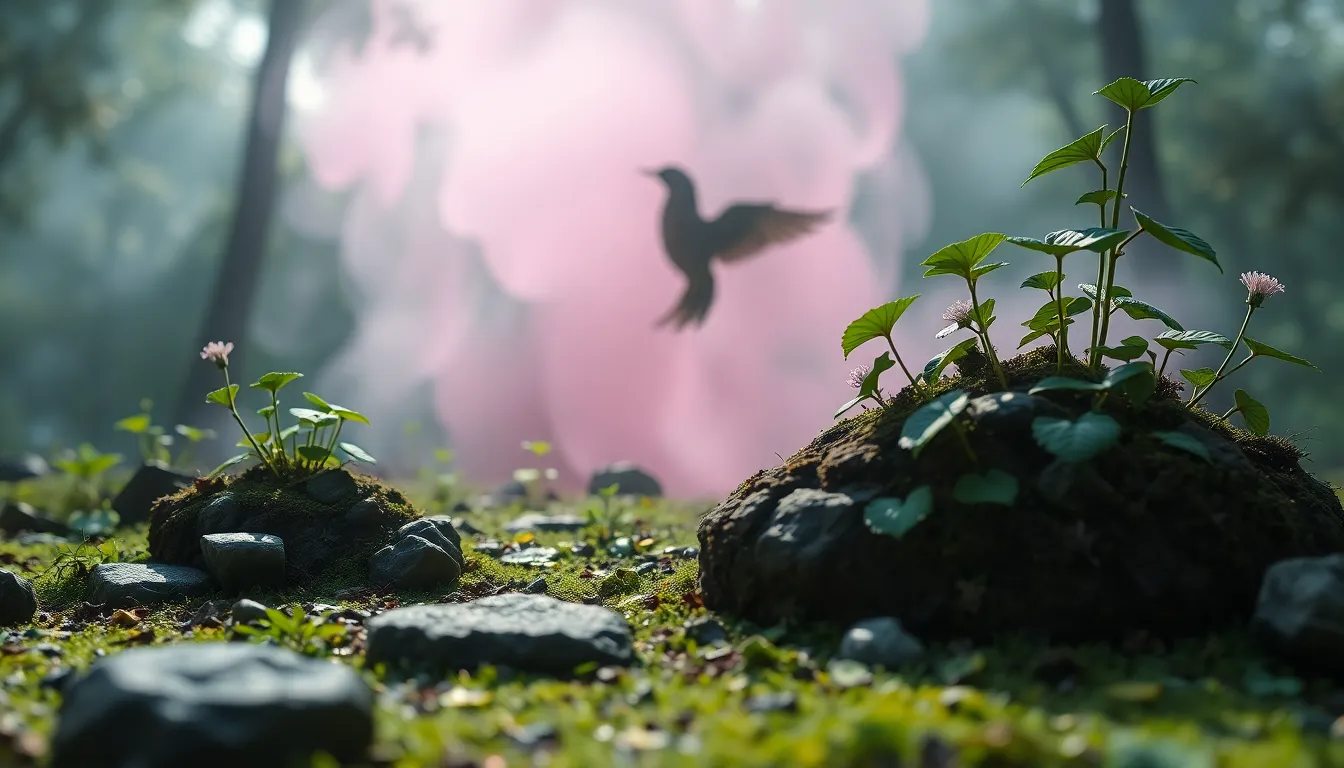Are Plants Really Magical? The Myths That Captivate Us
Introduction
Throughout history, plants have held a captivating allure in various cultures around the globe. From ancient rituals to modern-day herbalism, the fascination with plants often intertwines with notions of magic and mysticism. This article delves into the concept of “magical” plants found in folklore and mythology, exploring how these beliefs have shaped human interaction with the botanical world.
The Historical Context of Magical Plants
Ancient civilizations developed intricate belief systems surrounding the natural world, including plants. These beliefs often attributed magical properties to certain flora, which were used in rituals, medicine, and spirituality.
- Egyptian Civilization: The ancient Egyptians revered plants like the lotus and papyrus, associating them with creation and rebirth.
- Greek Civilization: The Greeks believed in the magical properties of plants such as the mandrake, which was said to scream when pulled from the ground, and was linked to fertility and protection.
- Native American Traditions: Many Native American tribes regarded plants as sacred and integral to their spirituality, using them in ceremonies and for healing purposes.
Plants in Folklore and Mythology
Many plants have become emblematic in folklore and mythology, often carrying tales of enchantment or warning. These narratives not only reflect cultural values but also illustrate the deep connection between humanity and nature.
- Mandrake: Known for its humanoid shape, mandrake was often linked to fertility and was believed to possess protective powers.
- Wolfsbane: This plant is steeped in legend, often associated with werewolves and believed to be a powerful poison.
- Yarrow: Used in divination practices, yarrow was believed to enhance psychic abilities and was often called upon for protection in rituals.
The Science Behind Plant Myths
While many magical beliefs surrounding plants are rooted in folklore, some have a basis in botanical science. The properties of certain plants can evoke feelings of magic, particularly those that alter perception or have unique biological effects.
Psychoactive plants, such as peyote and psilocybin mushrooms, have been used in traditional rituals to induce altered states of consciousness. Their historical uses illustrate how ancient cultures sought to connect with the divine or explore the self through nature.
Healing and Medicinal Plants: The Line Between Magic and Science
Historically, many plants have been revered for their healing properties. This intersection of magic and science highlights how ancient practices can sometimes be validated by modern research.
- Willow Bark: Known for its pain-relieving properties, it contains salicin, which is the precursor to aspirin.
- Garlic: Celebrated for its medicinal qualities, garlic has been used for centuries to ward off illness and infection.
- Echinacea: Traditionally used by Native Americans, it is now recognized for its immune-boosting properties.
The Symbolism of Plants in Different Cultures
Plants carry rich symbolic meanings across cultures, often representing various human experiences and emotions. Understanding these symbols can deepen our appreciation for the natural world.
- Roses: Symbolizing love and passion, roses have long been associated with romance and beauty.
- Oak Trees: Representing strength and endurance, oak trees are often seen as symbols of stability and longevity.
- Bamboo: In many Asian cultures, bamboo symbolizes resilience and flexibility, reflecting a deep respect for nature’s adaptability.
Modern Interpretations of Plant Magic
In recent years, there has been a resurgence of interest in herbalism and plant-based spirituality. Contemporary practices often reinterpret ancient beliefs, blending traditional knowledge with modern wellness trends.
People are increasingly turning to plants for guidance in personal growth, healing, and connection to nature, often creating communities centered around these practices.
Cautionary Tales: Misconceptions and Misinformation
Despite the allure of plants and their magical associations, misinformation abounds. It is essential to distinguish between myth and reality in the realm of plant usage.
- Many plants are misrepresented as cures for serious illnesses without scientific backing, leading to potential health risks.
- Some plants, touted for their magical properties, can be harmful if misused or misunderstood.
The Role of Plants in Sustainability and Ecology
Beyond their magical and medicinal attributes, plants play a crucial role in sustaining our ecosystems. Their contributions to biodiversity and the environment are nothing short of magical.
Understanding plant life can lead to sustainable practices that benefit both humanity and the planet:
- Plants improve air quality and combat climate change.
- They provide habitat and food for countless species, maintaining ecological balance.
- Native plants are essential for preserving local ecosystems and supporting wildlife.
Conclusion: The Intersection of Myth and Reality
The enduring fascination with plants reflects humanity’s desire to connect with the natural world. While the magical qualities ascribed to plants serve as a bridge to our past, it is crucial to appreciate them for their real benefits and beauty. As we explore the intersection of myth and reality, we can cultivate a deeper respect for the botanical wonders that enrich our lives.



